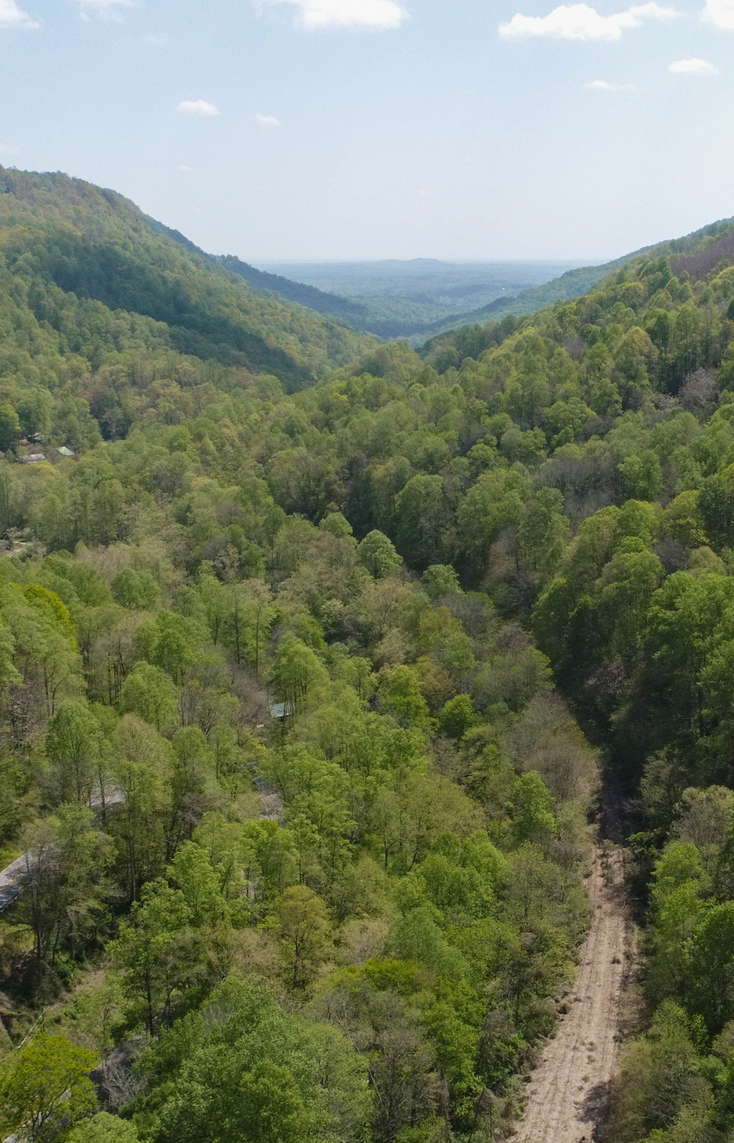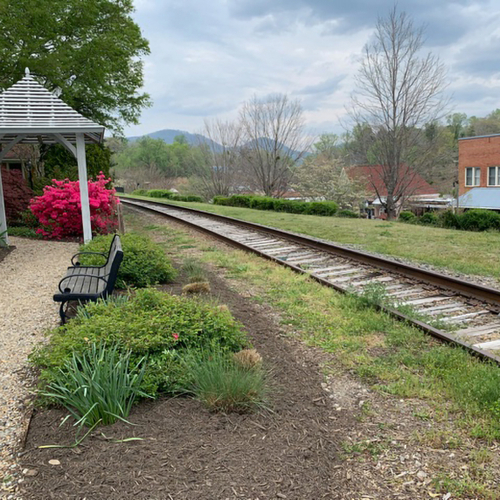

The Vision for the Saluda Grade Trail
-
What is the Saluda Grade Rail Trail?
The Saluda Grade is a potential rail trail following the unused Saluda Grade rail line for approximately 31.5 miles through Upstate South Carolina and Western North Carolina. The proposed trail passes through downtown Inman, Gramling, Campobello, Landrum, Tryon, and Saluda as well as the picturesque Piedmont countryside, the Pacolet River gorge with its plunging waterfalls, and the spectacular scenery around the Green River.
-
Why make the Saluda Grade into a rail trail?
Converting this inactive rail line into a vibrant trail corridor would have numerous benefits for local communities. It would expand access to outdoor recreation, leading to a wide range of health benefits. It would also serve as an economic engine to attract tourists, strengthen local businesses, and grow the local tax base. It would make our communities better places to live, with more economic opportunity and more ways to explore the beautiful countryside and charming small towns.
-
What is the route of the Saluda Grade rail trail?
The proposed rail trail would run from Inman, SC to Zirconia, NC. It is estimated that the route would span approximately 31.5 miles, including approximately 15.5 miles in South Carolina and 16 miles in North Carolina.
-
What is the Saluda Grade’s history?
The Saluda Grade Railroad was built in the 1870s and operated for over a century. It holds a special place in history as the steepest standard-gauge mainline railroad in the United States. To link Spartanburg and Asheville, trains crossed the dramatic Blue Ridge Escarpment with its treacherous grade (as high as 5%). The line has been owned and operated by Norfolk Southern since 1982, and the last trains ran on this line in 2001.
Learn more -
Is the Saluda Grade too steep to be a rail trail?
While the Saluda Grade rail line is famously steep, the dramatic grade is only in a small section of the line where it crosses from the Piedmont to the mountains. Much of the route is level or moderate in its grade.
-
Will there ever be a railroad on this route again?
The Saluda Grade Trail would be created through a federal “railbanking” program that converts an inactive rail corridor to a trail until the route is needed again for rail transportation. Although it is possible that the route could be used as a rail line again, it has been inactive for over 20 years and the rails are inoperable. Norfolk Southern Railroad has entered an agreement on terms of a future sale and has no plans to use this line for trains in the foreseeable future.
-
What are some regional rail trails comparable to the Saluda Grade?
Many unused rail lines across the United States have found new life as popular rail trails, bringing vitality to rural communities. In the Southeast, some beloved rail trails include the 22-mile Prisma Health Swamp Rabbit Trail and the 34-mile Virginia Creeper Trail. In addition, plans are moving forward for the much-anticipated 19-mile Ecusta Trail that will link Hendersonville to Brevard.
-
What activities would be allowed on the Saluda Grade Trail?
We envision the Saluda Grade as a multiuse path that will beckon people outdoors for walking, running, biking, adaptive mobility, and other compatible modes of recreation and travel. The exact activities allowed on the trail will be determined by the organizations or government bodies managing the trail. It may be possible to include an equestrian path in the design, depending on public input and available funding.
-
Will the Saluda Grade connect to other rail trails or greenways?
There is potential for future connector trails that would link the Saluda Grade to other major regional trail systems, forming a regional network that includes the Ecusta Trail, Hellbender Trail system, Palmetto Trail, Swamp Rabbit Trail, and The Daniel Morgan Trail System in Spartanburg.
Benefits & Impacts of Rail Trails
-
How would the Saluda Grade Trail impact the economy?
The Saluda Grade Trail would strengthen our local economies in many ways, from the jobs involved in trail construction to the businesses that will flourish along the route. In 2021, a study commissioned by Spartanburg County found that the trail’s initial construction could have $40-45.6 million in economic impact. Additionally, construction of new homes and businesses along the route could have $7.6 million in impact, and ongoing spending by trail users and businesses could come to $11 million in economic impact every year. The Saluda Grade partners are planning a more in-depth study of the trail’s potential economic impact.
-
What economic impacts have resulted from rail trails in other communities?
Rail trails have a powerful track record as drivers of economic growth for small towns and rural communities. For example, the Virginia Creeper Trail attracts 112,000 out-of-town visitors every year and 54,000 of those visitors spend at least one night. The Swamp Rabbit Trail in Greenville County, SC, saw 530,000 visitors in 2014, of whom almost a quarter came from outside the Upstate Area.
-
How would the trail benefit public health?
Trails are safe and appealing places for walking, running, biking, adaptive mobility, and playing outdoors. Trails are especially helpful in increasing physical activity in rural areas with fewer parks or sidewalks and among groups at higher risk of inactivity. Exercise—especially in nature—also has a positive effect on mental and emotional wellbeing. In fact, one study showed that every $1 spent on greenways leads to $3 in health care savings!
-
How would the trail benefit the environment?
This 31.5-mile linear park would help connect protected natural areas, such as the Greenville Watershed, Chestnut Ridge Heritage Preserve, Green River Game Lands, Norman Wilder Forest, Melrose Falls, and Pearsons Falls. It would create an unbroken migration corridor supporting birds and other wildlife. People can also use the trail for alternative transportation, meaning less traffic, cleaner air, and climate benefits. And they can connect with nature, which leads to a stronger personal ethic of environmental stewardship.
-
How would the trail affect property values?
Rail trails provide a desirable amenity for nearby properties, with correlated increase in property values. The National Association of Realtors states, “living near trails and greenways will likely raise your property value an average of 3-5%.”
-
Would the trail impact public safety?
There is no evidence that rail trails increase crime. Numerous studies have shown that rail trails do not make any measurable difference in public safety. A 2021 report by the U.S. Department of Transportation states, “[I]n general, trails are unlikely to experience security and safety issues significantly different from the surrounding area.”
In fact, trails often reduce the opportunity for crime, compared to a vacant rail corridor. When you legitimize the use of the corridor, illegitimate use decreases.
A 2021 article on the local impacts of the Swamp Rabbit Trail confirms that most incidents along that trail are minor. The article quotes police officer, Mike Jenkins: “Generally, what you see are people who are out walking, bicycling, jogging, pushing strollers and sight-seeing. My question to you is whether they would be more likely to increase crime or deter it... You have witnesses and reporters everywhere.”
The Process of Creating the Trail
-
Who is leading the Saluda Grade Rail Trail project?
A coalition of three nonprofits in North and South Carolina is leading the effort to create the Saluda Grade Trail: Conserving Carolina (NC), PAL: Play, Advocate, Live Well (SC), and Upstate Forever (SC).
-
Where will funding for the trail come from?
The Saluda Grade Trail partnership will seek most of this funding to buy the corridor and build the trail from state and federal grant sources. It is likely that we will also need to raise matching funds from local sources.
-
Who will manage and maintain the rail trail?
The coalition leading the efforts is in conversations with several organizations, including local government agencies, to determine which entity would be the best fit for managing and maintaining the trail.
-
How much does trail maintenance cost?
A 2015 study by the Rails-to-Trail Conservancy concluded that the average annual cost of a paved trail is $1,971 per mile. There are many maintenance variables, such as location, paving material, rainfall, topography, and trail use. Some communities have successfully used volunteers for light trail maintenance, including litter and brush removal and weed eating. Larger maintenance projects, like down trees, are handled by trained public employees.
-
Will landowners along the trail be compensated?
Some landowners along the corridor may be entitled to some financial compensation from the federal government when the corridor is railbanked for interim trail use. Individual landowners will need to consult with a qualified legal professional to determine whether they are eligible for compensation and how to proceed with a claim.
-
Will adjacent property owners be legally liable for accidents and injuries on the trail?
Typically, the adjacent property owner would not be responsible for any liability claims within the easement area. Any person who leaves that easement area will be considered a trespasser and cannot make liability claims against the private property owner.
-
Will the trail increase property taxes?
Tax rates for properties along the rail line do not immediately change as a result of the trail. Over time, land near or along the trail is likely to increase in value, which may result in modest increases in property taxes.
-
Can I give input into plans for the trail?
Yes! The Saluda Grade Trail coalition is seeking public input and will be actively engaging landowners and community members as part of an in-depth study that begins in the summer of 2023. Our goal is to better understand opportunities and challenges presented by the trail, and develop approaches that will best meet the community’s goals and priorities. In addition, there will also be multiple opportunities for public input in the design and preliminary engineering phase.
-
How can I support the Saluda Grade Trail?
The most important thing for the success of the Saluda Grade Trail is for community members to actively show their support. Sign up here for email updates about the trail, including opportunities to get involved. It's also very helpful for local governments, civic organizations, businesses, nonprofits, and other community groups to make and share statements of support.
-
Can I make a donation to the Saluda Grade Trail?
Yes! Your donation will help us match state and federal grants, so we can create the Saluda Grade Trail. To support the effort on the North Carolina side, donate through Conserving Carolina and select “Saluda Grade Rail Trail” as your donation purpose. To support the effort on the South Carolina side, donate through Spartanburg Community Foundation and select the “Saluda Grade Trail Implementation Fund.” Donations made through any of these nonprofits are tax deductible.